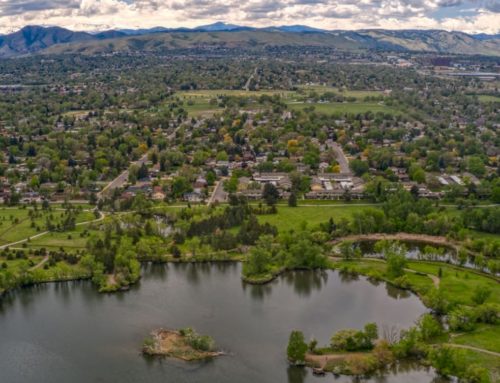The SafeCity GIS Solution at Work
The City of Simi Valley Emergency Operations Center Case Study
The City of Simi Valley is located in southern California half way between Santa Barbara and Los Angeles. With a population of 126,878 (as of July 1, 2017), Simi Valley is Ventura County’s third largest city. Sitting near two fault lines – one of which is the major San Andreas Fault – and with summer heat spurring on wildfires, Simi Valley is especially vulnerable to natural disasters. In May 2018, their Emergency Operations Center (EOC) reached out to Geographic Technologies Group (GTG) for support.
The primary reason The City of Simi Valley came to GTG was that they needed a comprehensive GIS suite to interpret data used before, during and after any disaster event. They needed to visualize incident locations and details in a map-based representation to increase planning and response accuracy and efficiencies. This system was to be utilized to its full extent as a foundation for decision-making and strategic planning regarding the development and management of the daily operations of the City’s EOC.
The City of Simi Valley was already deploying various Geographic Information Systems (GIS) initiatives for projects and departments throughout the city, but prior to this project with GTG, the EOC team did not have a focused implementation of GIS data, software, technology or the training. They were not able to adequately meet ever-increasing demands of disaster events. Data was delayed, and response times were slowed.
After consulting with the EOC team at The City of Simi Valley, GTG proposed the facilitation of a 4-step process to create and implement the SafeCityGIS solution. This process included the creation of a database tailored for the EOC; the addition of outside local, state, and federal data sources; deployment of software solutions to The City; and training for the City of Simi Valley EOC and field teams.
- The Creation of the Enterprise Database Design – This step defined the data that would be collected and maintained by the EOC and what information would subsequently be pulled into the new software applications. It defined possible values for each field and how they relate to each other. For example, the damage assessment for homes and businesses might include the incident date, incident type, victims, address, percent destruction, additional comments and more. The team pulled data from reports regarding hazard areas, emergency shelters, roadblocks/detours/closures, animal shelters, special needs populations, critical facilities, and many other applicable priority records.
- The Addition of Other Local, State, and Federal Data Sources to the Database – This step supplemented GIS data with information like census data, property lines, utility data, and flood zones. The GTG team worked closely with The City of Simi Valley EOC staff to ensure the appropriate data layers were pulled into the GIS system. They linked to external data sources for live weather, surrounding jurisdictional data, live stream gauges, and historical events and disasters.
- Deployment of the Software Solution to the City – This step was the actual build and implementation of SafeCityGIS systems and included the software applications as listed below:
- EOC GIS Viewer: displays incident reports and data on an interactive map, and contains numerous widgets for quick, dynamic analysis.
- Mobile Field Data Collector Deployment: A map-centric solution to inventory and collect incident information in the field.
- Operations Dashboard Deployment: A statistically-driven and geo-enabled solution for supervisors and managers to monitor ongoing efforts, resources, opportunities, and threats.
- Training for the City of Simi Valley EOC and Local Law Enforcement Teams – GTG met with all pertinent staff to train on the maintenance, use, and administration of all GIS applications.
“The City of Simi Valley EOC was thrilled to use the full suite of off-the-shelf Esri products available, particularly the Dashboards (for supervisors and managers) and Story Maps (for public engagement),” reports Senior GIS Analyst, Jonathan Welker. “They are still in the process of refining these applications but are excited about the seamless integration of data and the potential for future tailored deployments. They have also gained tremendous value from having a one-stop-shop for all necessary event data, whether that is data they are maintaining dynamically or data that is being consumed by external sources.”
Randy White, the Emergency Services Manager from the City of Simi Valley implementation team stated, “Before working with GTG, the EOC relied on multiple software solutions, external websites, and other external sources to access critical incident information.”
“GTG staff structured the development process very well. We were prompted to bring our subject matter expertise at the right times to quickly develop the database upon which everything else is based. As we worked through the various AGOL tools, we kept finding new way to apply them to enhance not only the EOC process but other areas like public preparedness with Story Maps, Situational Awareness for executives outside of the EOC, Operations Dashboards for management, and more.”
SafeCityGIS is an innovative enterprise and sustainable GIS management and analysis system and is changing and shaping the way that Emergency Operation Centers function, operate, and think about data. The system utilizes Esri’s foundation of new software products and provides a knowledge-based solution that delivers state-of-the-art geographic software, analysis, and visualization for situational awareness in real-time. It is an irreplaceable turnkey solution that offers a host of benefits to the City of Simi Valley EOC, decision-makers, field collection personnel, citizens, and more.
To read more on this project, see the full case study here.






